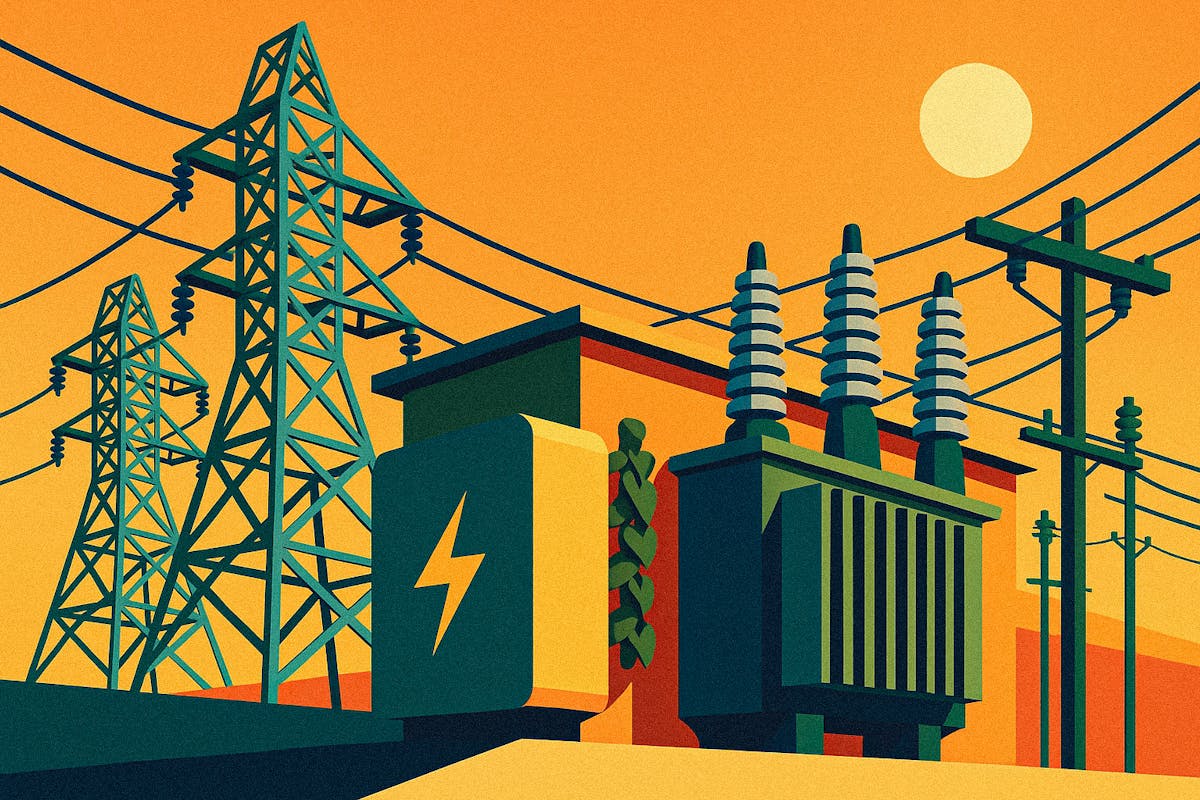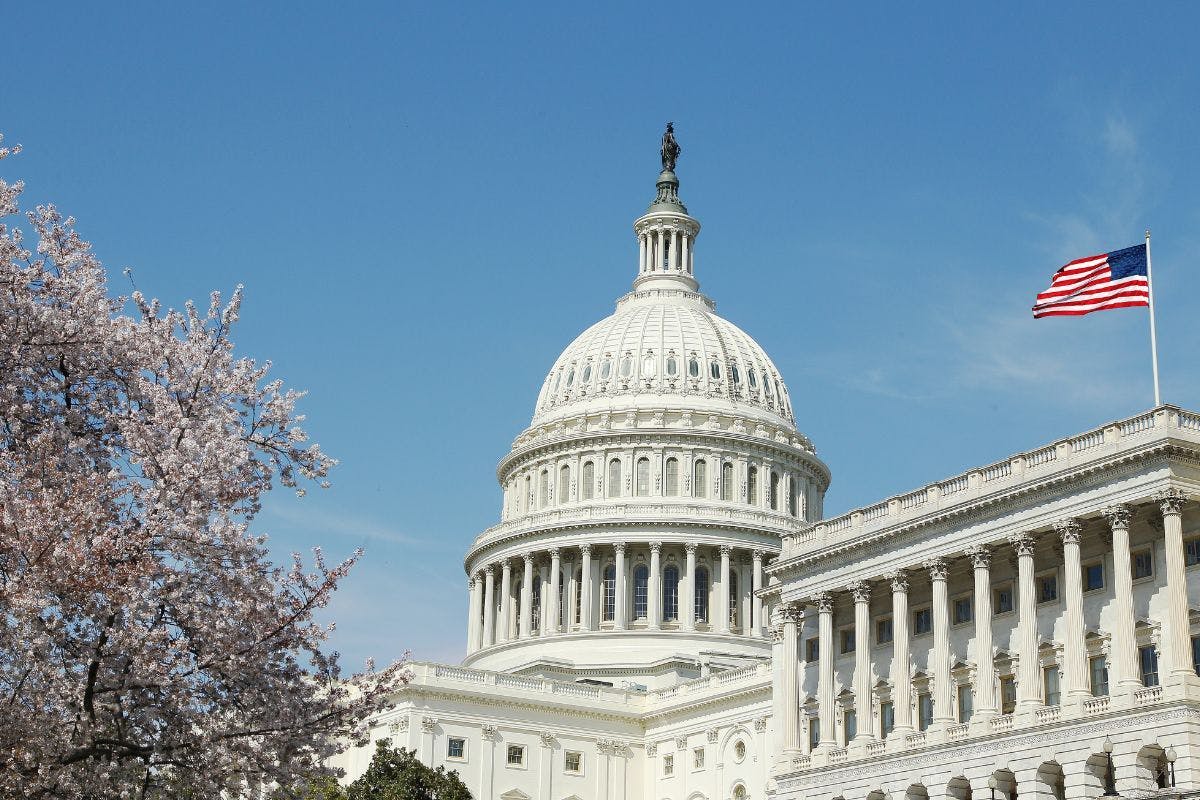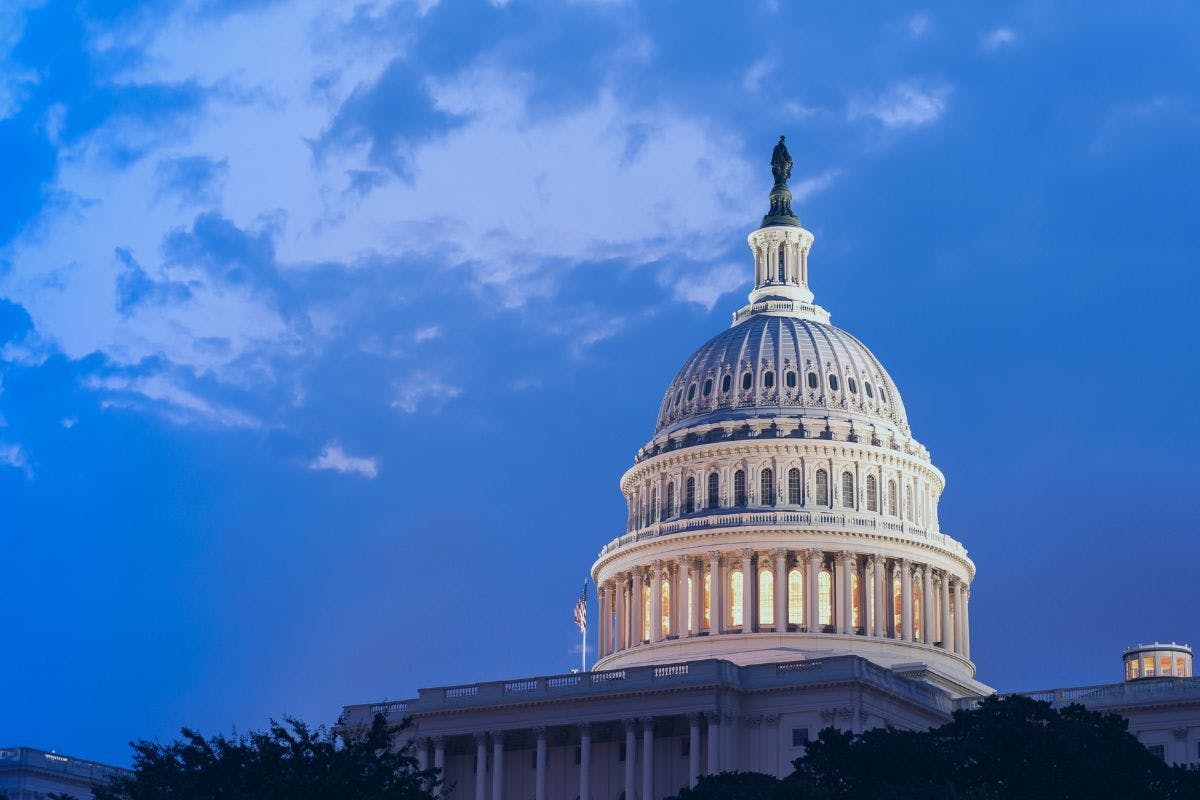Energy Deregulation: A Guide to What It Is and How It Works
Last edited

Author
Andrew Giermak
Solar and Electrification Writer and Editor

Editor
Andrew Blok
Electrification and Solar Writer and Editor

In much of the United States, you have one choice for where you get your electricity or gas. Your local utility company.
But in other places, you have a choice. While your utility company may deliver the electricity or gas, where you buy that energy is up to you. That choice can open the door for competitive companies to offer lower prices, but it can also open the door to confusion.
Here’s what you need to know.
See how much you can save by going solar with Palmetto
What Is Energy Deregulation?
Energy deregulation introduces choice to electricity and natural gas consumers.
Instead of paying the rate dictated by their local utility company, customers can instead choose the retail energy provider (REP) they like. Each competing company buys and sells energy from the deregulated energy markets. Depending on the plan they choose, a customer might pay less (or more) than they would with their incumbent utility.
Deregulation creates competition in the energy industry, which could lower prices, improve customer service, and provide more options for payment and energy type (i.e. fossil fuels vs. renewable energy).
How Does Energy Deregulation Work?
The difference between regulated and deregulated energy boils down to whether customers have a choice over who sells them the electricity and natural gas they need for their homes.
National grids and private utilities
After deregulation, large, multi-state electric grids are now operated by Regional Transmission Organizations (RTOs) and Independent System Operators (ISOs) under the regulation of the Federal Energy Regulatory Commission.
RTOs and ISOs use wholesale markets (energy markets, capacity markets, or ancillary services markets) to set prices for deregulated retail utilities, who purchase electricity from RTOs and ISOs at market-determined wholesale prices and sell electricity to customers at market-determined retail prices.
While RTOs and ISOs are similar, an ISO usually manages a single state (though it can sometimes manage multiple states) while RTOs perform a similar function but cover a larger geographic area, and as a result, have a greater responsibility for the transmission network.
There are nine ISOs/RTOs operating in North America:
- Alberta Electric System Operator (AESO) - ISO
- California Independent System Operator (CAISO) - ISO
- Electric Reliability Council of Texas (ERCOT) - ISO
- Midcontinent Independent System Operator, Inc. (MISO) - RTO
- ISO New England (ISO-NE) - RTO
- New York Independent System Operator (NYISO) - ISO
- Ontario Independent Electricity System Operator (IESO) - ISO
- PJM Interconnection (PJM) - RTO
- Southwest Power Pool (SPP) - RTO
Credit: ferc.gov
Many people are surprised to learn there is not a single national electrical grid for the United States. Instead, the US energy industry is split into three sections; the Eastern Grid, the Western Grid, and the Electric Reliability Council of Texas (ERCOT) Grid.
Credit: energy.gov
- Eastern Grid: Covers the largest part of the country, and spans from the Atlantic coast to the Great Plains (excluding most of Texas).
- Western Grid: Covers the Rocky Mountains to the Pacific coast.
- ERCOT Grid: Covers most of Texas.
Nearly the entire US grid is privately owned. This means private companies own the generation plants and/or own the transmission lines and distribution infrastructure.
The utility company is responsible for transmitting and distributing electricity to the homes it services. Generally, there is only one utility company in a given area, but it can buy electricity from multiple generation facilities.
FERC regulates the grid (except in Texas) to ensure private companies are delivering safe and reliable service to residents. However, FERC does not regulate how much those companies charge.
Deregulation at the local level
In deregulated energy markets, there can be many companies competing for customers. Often, energy providers will work across regions and states.
Competition can lead to lower energy rates, or additional benefits as companies try to gain and retain customers. However, no matter what retail energy company you work with, you will receive electricity and/or natural gas through your local utility company.
Compare that to areas with regulated electrical energy, where you do not choose who you get your energy from. There is one designated company for your electrical energy — typically the utility company — and you pay the utility rate it charges.
If your area has energy deregulation, you can choose the company, plan, and rate you want. Your local utility company will provide you with electricity at the rate dictated by the retail provider.
The retail electric provider
One of the unique creations of deregulated electricity is the retail electric provider (REP). Also known by a variety of terms, including competitive retail electric service (CRES) providers, these third-party companies provide customers with more choice over what they will pay for electricity.
REPs compete with each other to attract electricity customers using various rates and term lengths.
In regulated states, the utility company controls all elements of the relationship between the customer and their electricity.
- The utility buys the electricity from the generators, also known as the supply.
- The utility is responsible for the transmission and distribution of electricity via the lines, poles, and meters in their service area.
- Customers have to pay what the electric utility charges them, and the price per kilowatt-hour can change every single bill.
In a deregulated energy environment, the REP takes the supply and pricing part of the equation away from the utility, while the customer enjoys more control over their electricity.
- Each REP purchases the electricity it needs for their customers from the generators.
- The utility company (sometimes referred to as a Transmission Distribution Utility, or TDU) still ensures that electricity gets to the customers in its service area, including all necessary maintenance of the lines, poles, and meters.
- Because they control the supply, each REP creates a range of plans and electricity rates to compete with each other for customers.
- These plans can be designed to attract specific types of homeowners. For example, one plan might charge slightly higher rates during the day, but significantly lower rates at night, for customers who want to shift their energy consumption and save when charging an electric vehicle overnight.
- Customers choose the REP they want from the available plans and rates. They can then switch to another REP when the term for their plan ends.
See how much you can save by going solar with Palmetto
The Benefits of Energy Deregulation
No energy system is perfect, but energy deregulation has quite a few benefits:
- Choice: You choose where you are getting your energy from, and can choose the best plan for your circumstances.
- Competition: In deregulated states, retail energy providers must compete with each other to gain customers. When several retail electric companies are allowed to form, it stops one company from taking over everything and becoming a monopoly.
- Service: Competition means consumers can end up with better rates, perks, benefits, and customer care.
- Conservation: Looking at different energy plans can help you understand how your home consumes energy, which can encourage you to reduce your usage.
The Drawbacks of Energy Deregulation
Even with all of the positives to deregulation, some drawbacks exist.
- Complexity: Choosing between companies and plans can be complex. Choosing a plan you don’t understand could end up costing you more money.
- Pricing: No one regulates prices set by retail energy providers, so they can set them to be whatever they want and rates can change over the course of some contracts. A plan you choose from an REP may not always save you money.
What States Have Deregulated Energy?
Several states in the US enjoy the benefits of energy choice. Some are deregulated only for electricity or natural gas. Others are deregulated for both.
Electricity only
The following states are deregulated for electrical power. The following companies are deregulated electricity suppliers. For official information in your state and area, check with providers and utilities in your area.
- Delaware: Constellation, NRG Energy, and PSEG Services
- Connecticut: United Illuminating (UI) and Eversource (formerly Connecticut Power & Light)
- Maine: Central Maine Power (CMP) and Emera Maine
- Texas: Texas-New Mexico Power (TNMP), American Electric Power (AEP) Central, American Electric Power (AEP) North, CenterPoint, Sharyland, and Oncor
- New Hampshire: Eversource, Liberty Utilities, Unitil, and the New Hampshire Electric Cooperative, Inc. (NHEC)
Natural gas only
These states are deregulated for natural gas only. The following companies are deregulated gas suppliers. For official information in your state and area, check with providers and utilities in your area.
- Georgia: Atlanta Gas Light Company (AGLC)
- Florida: Florida Public Utilities (FPU), Central Florida Gas (CFG), Florida Natural Gas (FNG), TECO Peoples Gas System, and Florida City Gas
- Kentucky: Columbia Gas of Kentucky, Atmos Energy, and Louisville Gas and Electric
- Indiana: Citizens Energy Group, Indiana Natural Gas Corporation, Midwest Natural Gas Corporation, Northern Indiana Public Service Company (NIPSCO), Ohio Valley Gas Corporation, Vectren, and Sycamore Gas Company
- Montana: Energy West Montana (EWM), Montana-Dakota Utility Company (MDU), Big Sky Gas (BSG), and Northwestern Energy (NWE)
- Michigan: DTE Energy, Consumers Energy, SEMCO Energy Gas Company, and Michigan Gas Utilities
- Wyoming: Black Hills Energy (formerly SourceGas)
- Virginia: Appalachian Natural Gas Distribution Company (ANG), Atmos Energy, Washington Gas Light Company (WGL), Columbia Gas Services (CGS), Roanoke Gas Company, Southwestern Virginia Gas Company, and Virginia Natural Gas (VNG)
Electricity and natural gas
In these states, consumers can choose a retail provider for both electricity and natural gas if they live within the service area of the listed utilities. Again, for more complete information, check with provider companies and utilities in your state and area.
- Illinois: Electricity: Commonwealth Edison Company and Ameren. Natural Gas: North Shore, Nicor, and People’s Gas.
- Maryland: Electricity: A&N Electric Cooperative, Choptank Electric Cooperative, Baltimore Gas and Electric (BGE), Easton Utilities Commission, Potomac Edison, Delmarva Power and Light, Potomac Electric Power Company (PEPCO), and Southern Maryland Electric Cooperative (SMECO). Natural Gas: Washington Gas Light, Baltimore Gas and Electric (BGE), Chesapeake Utilities Corporation, Columbia Gas of Maryland, Elkton Gas, Central Penn Gas.
- Massachusetts: National Grid, Eversource, Municipal Light Plant, and Unitil (formerly Fitchburg Gas & Electric)
- New Jersey: Electricity: Jersey Central Power & Light, Atlantic City Electric, Orange and Rockland Electric, and PSE&G. Natural Gas: New Jersey Natural Gas, Elizabethtown Gas, South Jersey Gas, and PSE&G.
- New York: Electricity and Gas (Combined): Consolidated Edison, National Grid, Central Hudson Gas & Electric, New York State Electric & Gas, Rochester Gas & Electric, and Orange & Rockland. Natural Gas (Only): National Fuel Gas Distribution, Corning Natural Gas, and St. Lawrence Natural Gas.
- Ohio: Electricity: AEP Ohio, American Transmission Systems Inc., Dayton Power & Light, Duke Energy Ohio, FirstEnergy companies (Ohio Edison, The Illuminating Company, Toledo Edison), Ohio Power Company, and Ohio Valley Electric Company. Natural Gas: Dominion Energy, Columbia Gas of Ohio, Duke Energy, and Vectren.
- Pennsylvania: Electricity: Citizens' Electric, Duquesne, Pennsylvania Power Company (Penn Power), Metropolitan Edison Company (Met-Ed), Pennsylvania Electric Company (Penelec), PPL Electric Utilities, PECO Energy Company, Pike County Light & Power, UGI Utilities, Wellsboro Electric, and West Penn Power. Natural Gas: Columbia Gas of Pennsylvania, Leatherstocking Gas Company, PECO Gas, Peoples Natural Gas Company, National Fuel Gas, Peoples Gas, Philadelphia Gas Works (PGW), Pike County Light & Power, UGI Utilities, and Valley Energy.
- Rhode Island: Electricity and Gas (Combined): National Grid.
A Brief History of Energy Deregulation in the US
We arrived at the current state of energy industry deregulation over many years. Here’s a simplified timeline:
- 1935: The Public Utility Holding Company Act (PUHCA) is passed, which allows the government to regulate and control public utility companies. The hope was the act would prevent utility companies from grossly overcharging people, and ensure they provided proper service.
- 1965: The Great Northeast Blackout left 30 million people in the US and Canada without electricity for up to 13 hours. The blackout caused the US government to realize the responsibility for distributing electricity needed to be broken down into smaller regions.
- 1968: The North American Electric Reliability Council (NERC) was formed, splitting the US into 10 energy regions responsible for controlling energy and improving energy delivery's reliability.
- 1970s: The price of oil went up drastically, causing energy companies to create new plants using different resources, and the cost of building that infrastructure was passed onto the consumers.
- 1977: The Federal Energy Regulatory Commission (FERC) was created, and it deregulated energy and left it up to each state to determine how they supplied energy. FERC regulates companies to ensure safe and reliable service, but it does not regulate the sale price of electricity.
- 1978: The Public Utility Regulatory Policies Act (PURPA) was enacted to help promote energy conservation (reduce demand) and greater use of domestic and renewable energy (increase supply).
- 1992: The Energy Policy Act was passed by Congress, creating an outline for what a competitive wholesale electricity generation market should look like.
- 2001: Deregulation was shown to not always work when Enron declared bankruptcy. Enron was intentionally withholding electricity to create artificial shortages and increase price, selling energy to California's utilities at over-inflated rates.
- 2021: A historically bad winter storm ripped through Texas, a deregulated energy state, resulting in many people losing power. Electrical companies had to make up for lost costs, and those costs were passed onto consumers.
How Does Energy Deregulation Impact Solar Power?
When you go solar, your electric rate affects your savings, and your net metering policy does too. That means you have more to consider when choosing a retail energy provider.
Often, Palmetto recommends that people with solar panels stick with their incumbent utility provider, and not a third-party supplier. Your supplier determines how you are credited for your excess solar production.
Some energy plans, like Palmetto’s offerings in retail choice areas of Texas, are specifically designed for people with home solar panels and batteries.
If you're ready to see what solar can do for you, get started with our free solar savings calculator to see how much you could save on your energy bills.
See what solar can do for you:
Frequently Asked Questions
How many states have deregulated energy?
Twenty one states have some level of deregulated gas and/or electricity for residential customers. In some states, deregulation covers the whole state. In some, there’s a deregulated market only with some companies or in some parts of the state.
What is electric company deregulation?
With electric company deregulation, customers choose from multiple retail electric providers. A marketplace with more options for consumers is meant to lead to lower prices, more plan options, and competition between companies.
What are the pros and cons of energy deregulation?
Lower energy rates, more plans for consumers to pick from, and better service due to competition are some of the positives of energy deregulation. Drawbacks include confusion about different companies and plans. In some cases, deregulation has led to price volatility or unexpected price increases.




